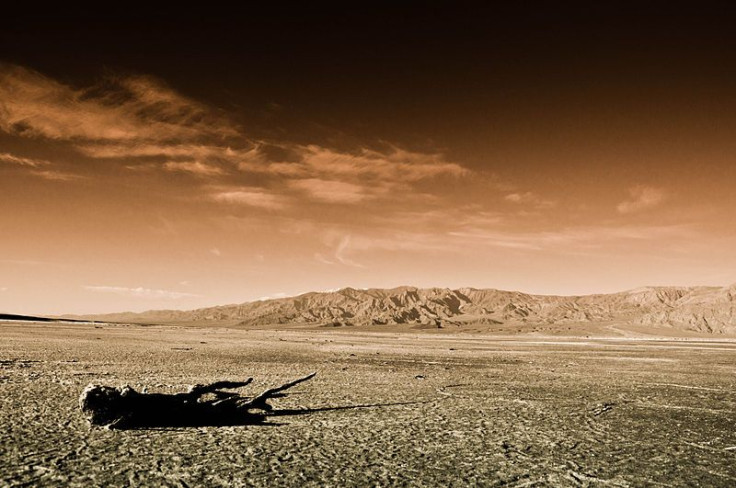Deserts Are Key Carbon Dioxide Sinks But Will Not 'Save' Earth From Climate Change, Study Says

As nations struggle to curb global emissions of carbon dioxide, which is recognized by most climate researchers as the primary greenhouse gas driving climate change, scientists are working to improve their undertstanding of how the Earth’s ecosystems absorb carbon dioxide naturally. A new study suggests that deserts, much like rainforests, play a critical role in soaking up excess carbon dioxide in the atmosphere.
The burning of fossil fuels worldwide continues to overburden Earth’s atmosphere with billions of metric tons of CO2 every year. According to a report by the Global Carbon Project, which collects data from research institutes around the world, global carbon emissions set a new record in 2013. Last year, nearly 40 billion metric tons of CO2 were dumped into the atmosphere. This figure represents a 2.1 percent uptick in CO2 emissions from 2012 and a 61 percent increase since 1990.
Carbon sinks are natural or artificial reservoirs where carbon accumulates after being removed from the atmosphere. They're created by a process called carbon sequestration. Earth’s other natural sinks include oceans, forests and organisms that use photosynthesis.
Researchers from Washington State University conducted a 10-year study in California’s Mojave Desert to test the arid landscape’s ability to take up CO2. NBC News reported that the team of scientists created nine octagonal plots, each about 75 feet in diameter. Three of the plots were left untouched; three were fumigated with air containing current levels of carbon dioxide concentrations, or 380 parts per million; and three were doused with air containing what Earth’s atmosphere is expected to contain in 2050 -- about 550 parts per million.
After 10 years, the team analyzed the soil inside the plots to see if the ground absorbed more carbon as the amount of carbon dioxide present increased. They found that the desert soil did in fact soak up more carbon by about 15 to 28 percent.
This could suggest that as more CO2 enters Earth’s atmosphere, Earth’s arid landscapes could offset at least some of those emissions. In their study, published in the journal Nature Climate Change, researchers described deserts “significant, previously unrecognized” carbon sinks.
“It has pointed out the importance of these arid ecosystems,” R. Dave Evans, a professor of biological sciences specializing in ecology and global change, said in a statement. “They are a major sink for atmospheric carbon dioxide, so as CO2 levels go up, they’ll increase their uptake of CO2 from the atmosphere. They’ll help take up some of that excess CO2 going into the atmosphere.”
However, researchers stressed that while identifying another carbon sink is certainly welcome news, it’s not a substitute for reigning in carbon dioxide emissions.
"It is worth noting that, although the sink in this experiment is significant, it is … about a hundredfold less than typical sinks in young forested ecosystems not exposed to elevated carbon dioxide," Christopher Field, director of the department of global ecology at Stanford University’s Carnegie Institution for Science, told NBC News. “The bottom line is that deserts will not save us from climate change."
© Copyright IBTimes 2024. All rights reserved.












